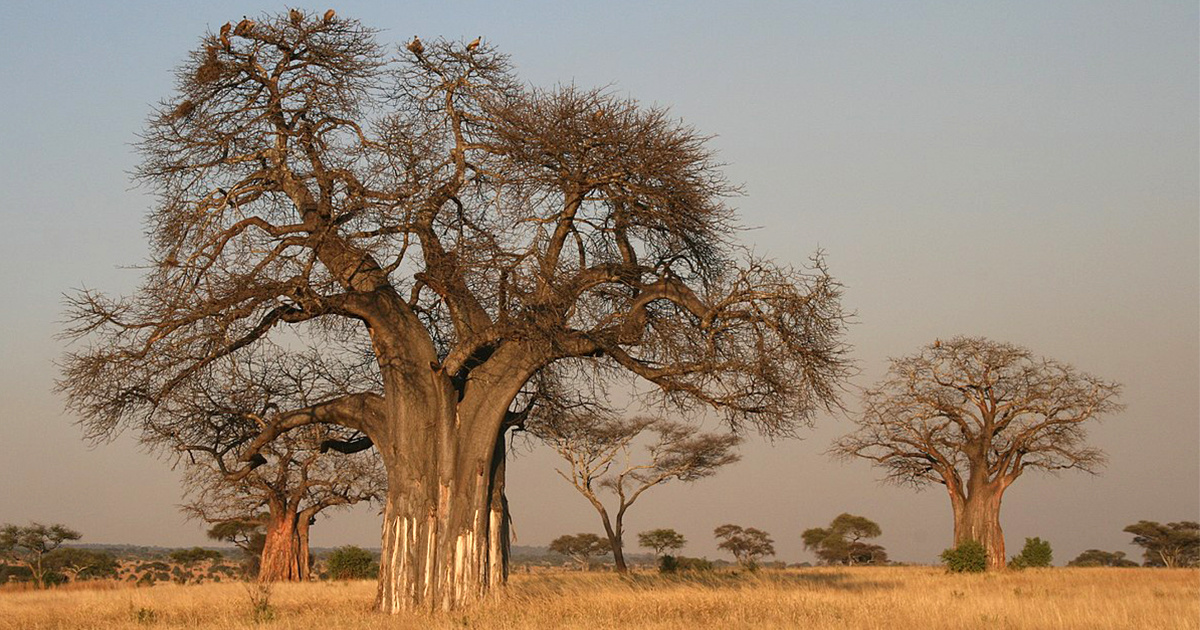
Africa’s Iconic Baobabs Are Dying, Including World’s OIdest Flowering Tree

A baobab in Tanzania. Yoky / GNU Free Documentation License
When researchers set out to investigate the structure, growth and age of Africa’s iconic baobab trees—the largest and longest-living flowering trees in the world—they received a devastating surprise. Many of the oldest, largest baobabs were dead or dying.
The final study, published in Nature Plants Monday, reported that nine of the 13 oldest and five of the six largest African baobabs had entirely or partly died during the research period from 2005 to 2017. The oldest was 2,500 years old.
“It is definitely shocking and dramatic to experience during our lifetime the demise of so many trees with millennial ages,” study co-author Adrian Patrut of the Babes-Bolyai University in Romania told AFP.
The researchers studied every known large African baobab in Africa, on islands off its coast or outside Africa for a total of more than 60 trees. All of the dying trees were found in the southern African countries of Zimbabwe, Botswana, South Africa, Zambia and Namibia.
Baobabs survive the dry Savannah by storing water in their large trunks, but researchers thought conditions were now getting too dry even for them.
The cause of the trees’ deaths was unknown, but was not attributed to disease, and the deaths of the oldest trees coincided with an uptick in mortality in other mature baobabs. The researchers therefore hypothesized that the impact of climate change on Southern Africa was to blame.
“We suspect this is associated with increased temperature and drought,” Patrut told BBC News.
The researchers also found that baobabs are always multi-stemmed: They grow new stems as they age the way other trees sprout branches. Of the endangered old and large trees, four had seen all stems collapse and topple entirely, while six had seen only some of their stems collapse and die.
The report also memorialized the oldest, largest and most famous trees to die.
The oldest, Panke, was a sacred tree in Matabeleland North, Zimbabwe. At around 2,500 years old, it was not only the oldest baobab, but the oldest angiosperm, or flowering tree, in the world.
The largest, the Platland tree or Sunland baobab, was also probably the most visited and promoted tree in Africa. It had a total wood volume of 501 cubic meters (approximately 17,692.6 cubic feet) and was also the largest angiosperm. It was located in the Limpopo province of South Africa.
The most famous, the Chapman baobab, was located in Botswana’s Makgadikgadi Pans. It was named for South African hunter James Chapman who visited it in 1852.
Baobabs are important to the ecosystems and cultures of Southern Africa. They provide nesting sites for birds, according to BBC News, and AFP reported that both animals and humans eat their fruit. Humans also boil their leaves for food and medicine and use the bark for rope, baskets, hats and cloth, AFP noted.
USDA Study Shows We’re Losing a Concerning Amount of Trees in Cities https://t.co/NpD32eUC9j @forestservice @fcscotland @forestethics
— EcoWatch (@EcoWatch) May 9, 2018

 233k
233k  41k
41k  Subscribe
Subscribe 